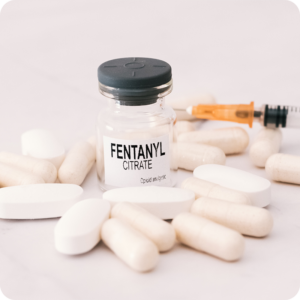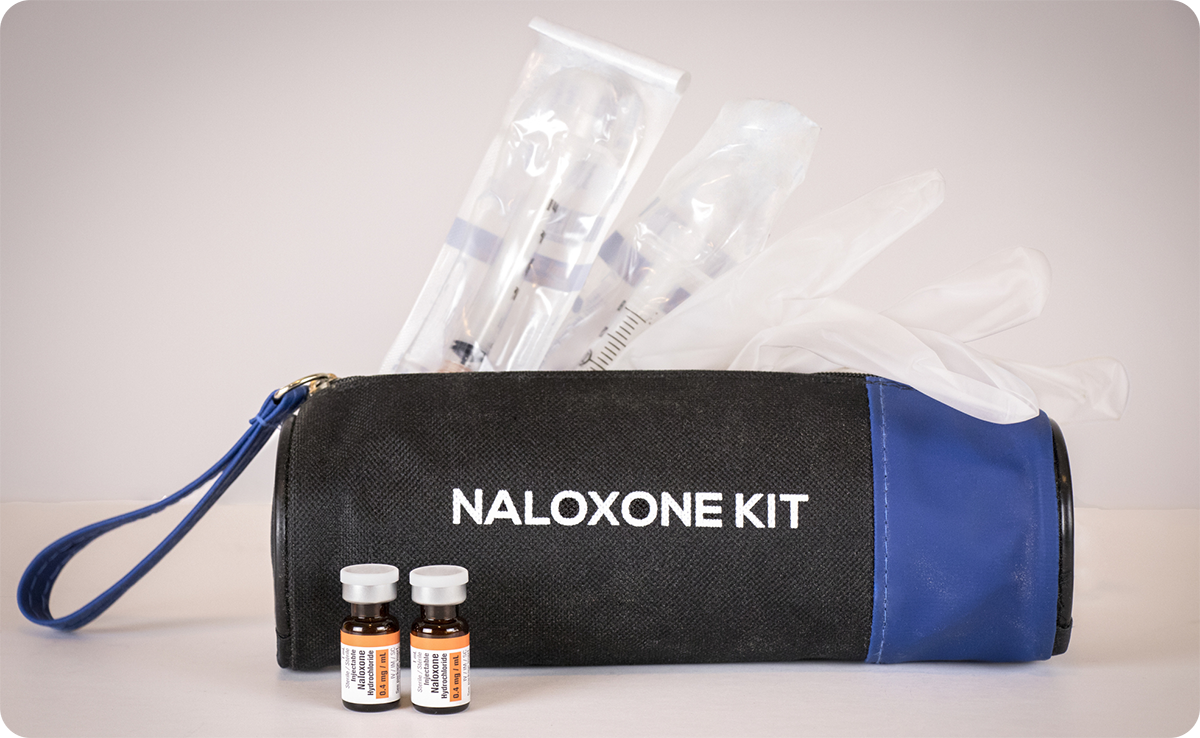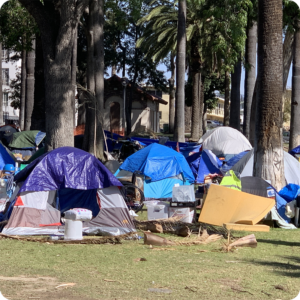In recent years, deaths from fentanyl and its analogues have ballooned in California. Alarming numbers of fentanyl prescriptions and illegal uses continue to rise, resulting in overdoses and deaths. While naloxone (trade name NARCAN) is a drug used to successfully reverse the side effects of an overdose, it is not a lasting solution for the fentanyl crisis.
It’s nearly impossible to break away from a drug habit alone. Unfortunately, barriers to receiving the professional help necessary to safely cease fentanyl use are causing fentanyl overdose numbers to increase. Although California is making an initiative to change this narrative, many people are not receiving the help they need.
What Is Fentanyl?
 Fentanyl is classified as a pharmaceutical drug with the purpose of treating severe pain. Manufactured as a much more powerful version of morphine (an opioid), it can be between 50 and 100 times stronger than morphine. While it was originally created as a prescription medication with a distinct purpose—treating severe pain in cancer patients, often as a pain-relieving patch placed on the skin—fentanyl became known for producing a heroin like-effect. As a result, most fentanyl-related harm occurs when it is illegally made and sold on the black market for those looking to achieve a high.
Fentanyl is classified as a pharmaceutical drug with the purpose of treating severe pain. Manufactured as a much more powerful version of morphine (an opioid), it can be between 50 and 100 times stronger than morphine. While it was originally created as a prescription medication with a distinct purpose—treating severe pain in cancer patients, often as a pain-relieving patch placed on the skin—fentanyl became known for producing a heroin like-effect. As a result, most fentanyl-related harm occurs when it is illegally made and sold on the black market for those looking to achieve a high.
Illegitimate fentanyl pills that have been tested have been found to harbor anywhere from a 0.02 to a 5.1% concentration of the drug, much higher than prescription fentanyl. In fact, the latter is more than twice the legal limit and can be fatal. To make matters worse, these fentanyl products are often cut with cocaine or heroin without the user’s knowledge. Alternatively, since fentanyl is cheaper and much more powerful than other opioids, it is often used as a stand-in to resemble other prescription medications and sold on the street. These illegitimate medications are powerfully addictive and can cause overdose and death in just one use.
The Fentanyl Epidemic in CA Is a Component of a Nationwide Problem
The lethal amount of fentanyl depends on a variety of factors including a person’s size, age, and tolerance. Since the level of the drug necessary to cause overdose can vary, deaths can be misclassified as simple opioid overdoses when they are actually caused by fentanyl. [1]CDC. (2021). Fentanyl. Centers for Disease Control and Prevention Resource. Retrieved April 25, 2022, from https://www.cdc.gov/opioids/basics/fentanyl.html
Even with the many misclassified deaths, the number of deaths attributed to fentanyl and other opioids have increased over time. In 2020, there were 14,867,426 prescriptions written for opioids, and 5,502 deaths as a result of an opioid overdose. Of these, an astounding 3,946 were related to fentanyl. Age and sex are a significant factor within the opioid crisis as well. In the United States, most deaths in relation to opioids are males between the ages of 30 and 39 years of age.
External Influences
While the opioid crisis has been well underway since the early 1990s, recent events have led Californians to become even more susceptible to this quickly-spreading epidemic. Perhaps most significantly, once the COVID-19 pandemic began to affect the state, opioid overdoses skyrocketed and haven’t returned to pre-pandemic levels since.
Within the first five months of the pandemic, accidental opioid drug related deaths experienced an 48% increase according to the Los Angeles County Medical Examiner-Coroner. [2]SAPC (2021). Data Report – Accidental Drug Overdose Deathsin Los Angeles County During the COVID-19 Pandemic. Los Angeles County Department of Public Health Substance Abuse Prevention and Control … Continue reading
Seventy-eight percent of these drug overdoses occurred among males. However, fentanyl and other prescription overdoses seemed to affect people of all demographics. During the first five months of the pandemic, accidental drug overdoses per 100,000 people increased by 41.7% among whites, 55.6% among African Americans, 196.1% among Asians, and 48.1% among Latinx.
How Can NARCAN Help?

If you’ve been following news of the opioid epidemic, you’ve likely heard of NARCAN. NARCAN (naloxone) is a medicine approved by the Food and Drug Administration (FDA) to block the effects of opioids, including fentanyl. It is considered a safe drug as it only has an effect on people who have opioids in their system. The FDA has approved two different formulations: prepackaged nasal spray and an injectable, both of which can be administered to a person experiencing an overdose as a life-saving measure. [3]NIDA (2022). Naloxone DrugFacts. National Institute on Drug Abuse Resource. Retrieved April 26, 2022, from https://nida.nih.gov/publications/drugfacts/naloxone
The drug has saved lives by reversing overdoses in people who are overdosing on fentanyl, heroin or prescription painkillers. With the injectable, the proper dose will be drawn from a vial and injected with a needle into a muscle, vein, or under the skin. A single-dose, pre-filled syringe has just recently been approved by the FDA as well. With the nasal spray, a device is sprayed into one nostril while the person is lying on their back. This is generally the easier of the two to use, especially for loved ones who have been trained to administer the drug in case of an emergency.
NARCAN will only stay in the system for approximately 30 to 90 minutes, making it possible for a person to still experience side effects of the overdose after the NARCAN has worn off. If the person has a potent opioid in their system, more than one dose of NARCAN may need to be administered. While there is research being done if a stronger dose of Narcan could possibly be approved and delivered, there is no other solution right now.
Once NARCAN has been administered, the person will need to be monitored continuously until medical personnel arrive. They should also be monitored for at least another two hours after the drug has been given because side effects such as slow breathing or other allergic-type reactions have been known to happen.
Within minutes of receiving NARCAN, a person who is addicted to fentanyl or other pharmaceutical drugs may begin to have withdrawal symptoms. These symptoms include changes in blood pressure, headaches, nausea, vomiting, rapid heart rate, sweating, and tremors. Although these symptoms may all be uncomfortable, there is usually a more likelihood of death from an opioid overdose versus an adverse reaction to NARCAN.

 To reduce fentanyl’s deadly impact on California, the state must band together to end the stigma of seeking help for opioid addiction. In an effort to do so, some communities across the nation have developed coalitions that work together across sectors that focus directly on the opioid crisis, providing education and information to the community at large. These groups have recruited a variety of community stakeholders such as government leaders, medical professionals, youth leaders, teachers, counselors, and more to help with the initiative. Aside from focusing on education, they have also developed action plans, conducted visioning sessions, and implemented information campaigns. The goal would be for more groups like these to be created across the state of California and nation in general.
To reduce fentanyl’s deadly impact on California, the state must band together to end the stigma of seeking help for opioid addiction. In an effort to do so, some communities across the nation have developed coalitions that work together across sectors that focus directly on the opioid crisis, providing education and information to the community at large. These groups have recruited a variety of community stakeholders such as government leaders, medical professionals, youth leaders, teachers, counselors, and more to help with the initiative. Aside from focusing on education, they have also developed action plans, conducted visioning sessions, and implemented information campaigns. The goal would be for more groups like these to be created across the state of California and nation in general.





















